The subtitle of Ally Beaven’s book, “Broken”, is “2020: the year running records were rewritten”. 2020, our first year of living with Covid-19, was a year when plans were thrown in the bin and runners looked for new ways of motivating themselves to keep running and training.
Several elite ultrarunners set their sights on running “fastest-known times” on recognised routes or other off-road records. It turns out there are dozens and dozens of recognised routes and records in the UK. I had no idea there were so many until I read this book.
Meanwhile, many ordinary runners, bereft of events, consoled themselves with “dot watching”- tracking the progress of some of the runners Beaven writes about on an online map. I followed Carla Molinaro’s dot as she made her way from Land’s End to John O’Groats (LEJOG) in July (chapters 8 and 10) and ended the year watching Kílian Jornet compete in a 24-hour track race in Norway. Along the way I watched the progress of Camille Herron and Sharon Gayter in ultra marathons and friends competing in the Hardmoors 55 in North Yorkshire. Dot watching can become very engrossing as you will on the runner to achieve their goal. You feel you are supporting them even though you can’t be there in person and you can become part of a community of supporters on social media.
Layout and content
The title of the book obviously refers to the records that were broken but perhaps it’s also a nod to the physical state of the runners after completing their challenges, particularly the multi-day ones.
I like the presentation of the book. The cover is card with fold-over flaps at the back and front which feature a blurb about the book and a profile of the author. There is a slashed design to the title which lends it energy. This is continued as a theme at the start of each chapter and when there is break in the narrative. The paper is of a nice quality and the type is a good size. The front cover picture is of Jo Meek running the Dartmoor Round.
The book has 13 chapters, each covering one or two athletes and one or two challenges, all of which are in the UK. All the attempts took place in the summer of 2020. Some of the challenges are popular and well-known in the ultrarunning or fell running communities. For example, the Lake District’s Bob Graham Round, 42 peaks in under 24 hours, had been completed by nearly 2,500 people at the end of 2019. The Round has its own website which lists 14 individuals who have set records (8 men and 6 women) including Bob Graham who first ran the challenge in 1932 (i). Other challenges, such as the Munro Round (282 hills), have only been completed a handful of times.
Review
Reading the introduction and first chapter, I asked myself “Who is the book for?” Was it aimed at seasoned fell runners (mainly men) and people who know the UK’s mountains like the back of their hand? (ii) I’d never heard of most of the fell races Beaven mentioned in the introduction. I was a bit put off by his casual use of language, describing people who complained about cancelled races as “a handful of morons who bitched and moaned” and repeating Bradley Wiggins’ robustly masculine phrase that dot watchers are “bone-idle wankers”.
However, as I continued reading, I began to feel more engaged and by the end of the book, I wished there were more chapters. I liked the episodic nature of the chapters and the fact that two of the “stories” were split into two. After reading about LEJOG in Chapter 8 we came back and found out what happened next in Chapter 10. Donnie Campbell’s attempt to break the record for a complete round of the Munros (hills in Scotland over 3,000 feet) is also split into two chapters. Beaven acted as his support runner on day 6 of his challenge and then saw Campbell finish four weeks later.
Beaven has the credibility of someone who is talking from experience. He previously held the record for the Cairngorm 4,000s (4 mountains over 4,000 feet). Whilst most enthusiasts only got to “dot watch” these challenges, Beaven was there for some of them, acting as support runner to several of the runners in the book. This personal experience of supporting others perhaps explains why he chooses to devote one of the chapters to Nicki Lygo, a highly experienced member of the support team at the Spine Race, a 268-mile race along the Pennine Way National Trail. Lygo sees it as “an enormous privilege” to support people who are trying to achieve a huge personal goal. As Beaven says “There’s something about being around someone who is doing something extraordinary.”
In the middle of the year, Beaven decides he is bored of dot watching and learning new skills and set outs to see if he can set an FKT for the Big 6 (the Cairngorm 4,000s plus two other mountains).
Most of the runners in the book are men. Beaven recognises the importance of women in supporting their attempts and names their wives and partners. Donnie Campbell’s wife Rachael seems particularly heroic, supporting him for the nearly five weeks it takes to complete the Munro Round. As well as driving the camper van, providing food and clean clothes, her support included picking up and delivering Campbell’s mountain bike on days when he started or ended his route by bike. The Round would not have been possible without her dedication.
Four women feature in “Broken”. Sabrina Verjee running the Wainwrights, 214 Lake District Hills. Beth Pascall setting a new record on the Bob Graham Round, “a stunning performance, its impact only emphasised by the fact that it came out of the blue”. Jo Meek’s record run of the Dartmoor Round, a route which takes in 28 tors with 4000 metres of climbing and wading across rivers. And Carla Molinaro’s new JOGLE/LEJOG record.
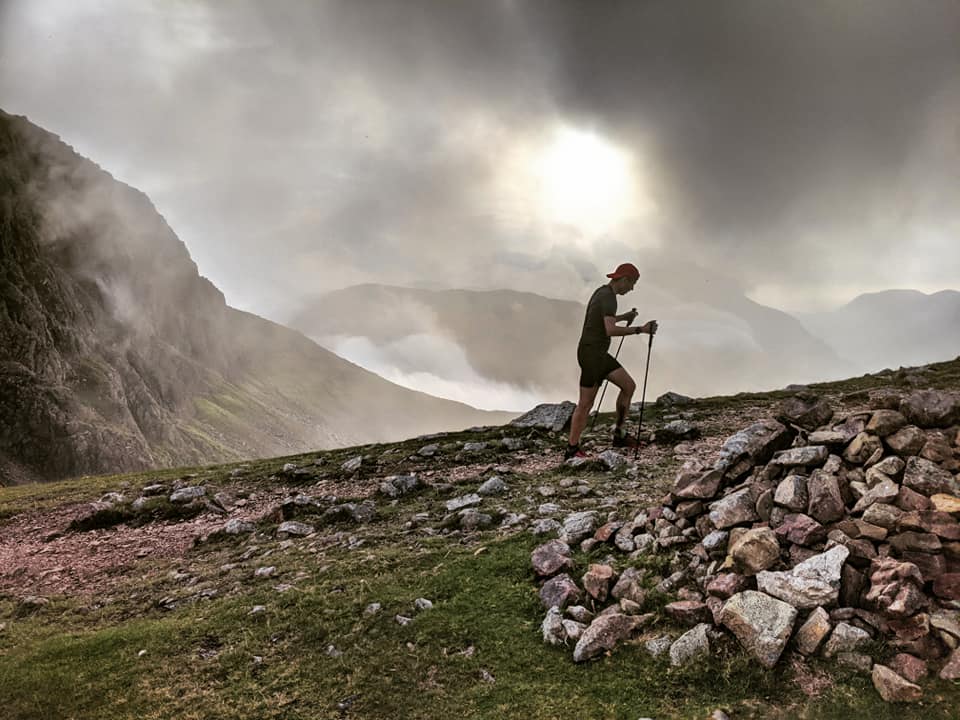
JOGLE records
The challenges in the book fall into two categories: routes that can be described as mainly fell running or hill running and JOGLE (John O’Groats to Lands End) which is primarily on roads. JOGLE has captured the imagination of the British public because of its association with Guinness World Records and because it’s a popular personal challenge for cyclists, walkers and relay teams as well as solo runners. The perception is that anyone can have a go at it, you don’t need to be an elite athlete, although in fact a considerable amount of organisation and support is required.
Beaven describes the recent history of the women’s JOGLE record, highlighting the records set by long-distance walkers Ann Sayer and Sandra Brown (1980 and 1995), as well as Sharon Gayter who has set the record twice (2006 and 2019) and Mimi Anderson (2008).
Looking backwards
“Broken” is a book which looks backwards and forwards as well as dealing with the present. This gives it depth and places the runners’ achievements within the context of the history of their challenges. Beaven relates the origins of each challenge and previous notable performances and record holders, making a point of mentioning women’s records. It is a heartwarming feature of these types of challenges that the current record holder often turns up to support the person attempting to break their record.
Inevitably much of the history of the fell and hill challenges is a male history. Many of the challenges were first undertaken by men at a time when women were largely excluded from fell running. Fell running did not begin to open up to women until the second half of the 1970s. It was not until 1977 that women were officially permitted to compete in fell races by the UK athletics governing bodies (iii).
For example, in Chapter 4, Beaven mentions Mel Edwards’ debut marathon time set in 1967. This was eight years before women (in England) were permitted to run further than 6,000m on the road (iv). And when Edwards broke the long-standing Cairngorms 4,000s record in 1979, many road and fell races were only just starting to admit women (v).
Acknowledging these facts would have added context, helping to explain the absence of women in the historical narrative. When all the “greats” are men, it leaves you wondering what place women have in this story (vi).
Looking forwards
Looking forwards, Beaven wonders if some of the top athletes tempted by FKTs and record setting in 2020, will make this kind of challenge part of their training plans in future years. How long will it be before their records are broken?
At the end of the book, Beaven imagines Bett Pascall doing the Bob Graham round again in 40 years’ time. I wonder when the women in “Broken” and others like them will be accorded the same status as men from the past are today.
In 10, 20 or 40 years’ time, will the people telling the stories of fell running’s past choose to remember and celebrate the women as well as the men?
Final thoughts
You may enjoy “Broken” for the insights it gives into the motivations of the runners and the vivid depiction of just how hard these challenges are. Or it just might set you thinking about your next challenge.
Thank you to Vertebrate Publishing for sending me a copy of the book to review.
Footnotes
(i) The official website of the Bob Graham Club
(ii) Fell running is dominated by men. 50.6% of the UK population is female. My analysis of the results from 13 fell races held in 2019 found that of a total of 3,185 finishers, just 24% (777) were women. Participation ranged from 14% (Ben Nevis) to 36% (Cioch Mhor). The races I selected were: three of the fell races mentioned by Beaven in the introduction and first chapter, four fell races picked from my running club’s Fell Racing Championships in 2019 and a further six races with 2019 results on the Fell Runners Association website.
(iii) “The Early Days of Women’s Fell Racing”, Brenda Robinson, The Fellrunner 50th Anniversary Special Edition, July 2020
(iv) “The Official History of the WAAA, 1922-2012”, Mel Watman, SportsBooks Limited, 2012.
(v) For example, in 1979 the Ben Nevis Ladies Race was still not official despite women having run in previous years. The women were made to start two minutes after the men and no women’s prizes were awarded (Ros Coates in The Fell Runner, January 1980). Two of the most famous road races in the UK, the Polytechnic Marathon and the London to Brighton ultra marathon did not officially admit women until 1978 and 1980 respectively. See my article on road racing in the 1950s.
(vi) Beaven uses the epithet “great” three times: “the great Bobby Shields”, “the great, mercurial Al Howie” and “the great (like really great) Don Ritchie.”
Jo Meek, Carla Molinaro and previous JOGLE record-holder Sharon Gayter have all competed for Team GB at the IAU 100k World Championships.
Read more articles about ultrarunning history.
Featured image: Holme Pierrepont Running Club member Rich Bee on his Bob Graham Round in September 2020.
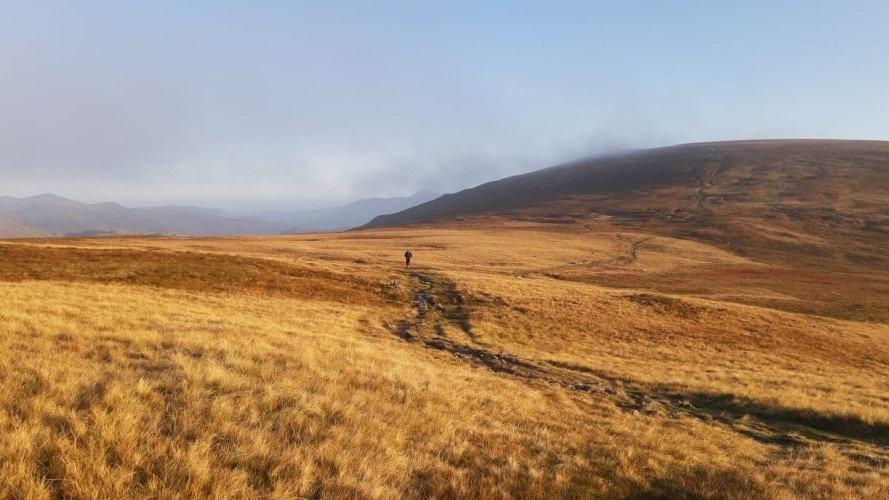
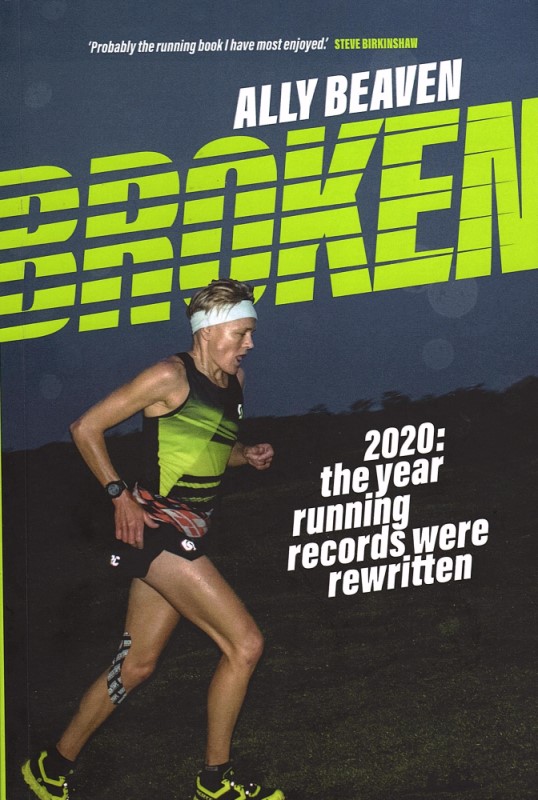

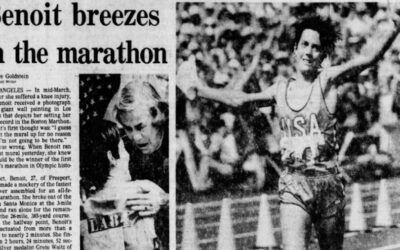
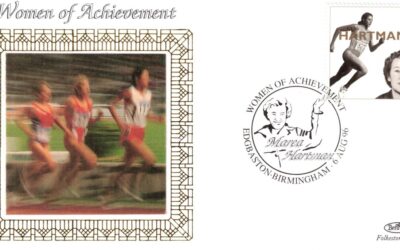
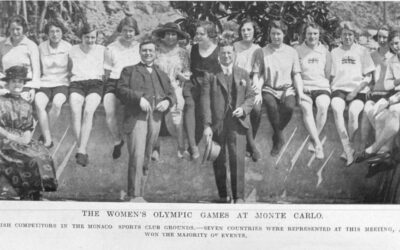
0 Comments